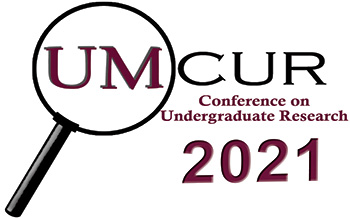Project Type
Presentation
Faculty Mentor’s Full Name
Leif Fredrickson
Faculty Mentor’s Department
History
Abstract / Artist's Statement
COVID-19 is not the first pandemic the world has faced, and today’s response to COVID-19 is similar in many ways to historic responses. For example, the concept of social distancing as a way to mitigate disease arose from governmental and societal responses to the Black Plague in the 1300s. In the last 100 years, the United States has faced multiple public health crises. This research analyzes the similarities in the federal government’s response to these public health crises; however, the research also uncovers multiple disparities in the federal government’s response depending on the type of disease and the population which is affected. In this presentation, I discuss the federal government’s practice of relying on state or local authorities to manage these public health disasters; I also evaluate cultural responses to diseases, including scapegoating and stigmatizing marginalized populations. Drawing on dozens of national and local primary source materials, this research analyzes the local, state, and federal responses to historic diseases and the current pandemic. It discusses the federal government’s generally weak response in addressing COVID-19 and compares the response to how it dealt with historical diseases. It summarizes the federal delegation of the responsibility for response to the states and specifically Montana. Finally, I will discuss the responses of Missoula County, local schools, and the University of Montana to various diseases. Ultimately, I conclude that the federal and state government’s responses to disease outbreaks have resulted in inadequate and inconsistent responses across time. The question remains whether we can learn from history, or whether we will condemn ourselves to repeat it.
Category
Social Sciences
Local, State, and Federal Responses to the COVID-19 Pandemic: A Historical Perspective
COVID-19 is not the first pandemic the world has faced, and today’s response to COVID-19 is similar in many ways to historic responses. For example, the concept of social distancing as a way to mitigate disease arose from governmental and societal responses to the Black Plague in the 1300s. In the last 100 years, the United States has faced multiple public health crises. This research analyzes the similarities in the federal government’s response to these public health crises; however, the research also uncovers multiple disparities in the federal government’s response depending on the type of disease and the population which is affected. In this presentation, I discuss the federal government’s practice of relying on state or local authorities to manage these public health disasters; I also evaluate cultural responses to diseases, including scapegoating and stigmatizing marginalized populations. Drawing on dozens of national and local primary source materials, this research analyzes the local, state, and federal responses to historic diseases and the current pandemic. It discusses the federal government’s generally weak response in addressing COVID-19 and compares the response to how it dealt with historical diseases. It summarizes the federal delegation of the responsibility for response to the states and specifically Montana. Finally, I will discuss the responses of Missoula County, local schools, and the University of Montana to various diseases. Ultimately, I conclude that the federal and state government’s responses to disease outbreaks have resulted in inadequate and inconsistent responses across time. The question remains whether we can learn from history, or whether we will condemn ourselves to repeat it.
